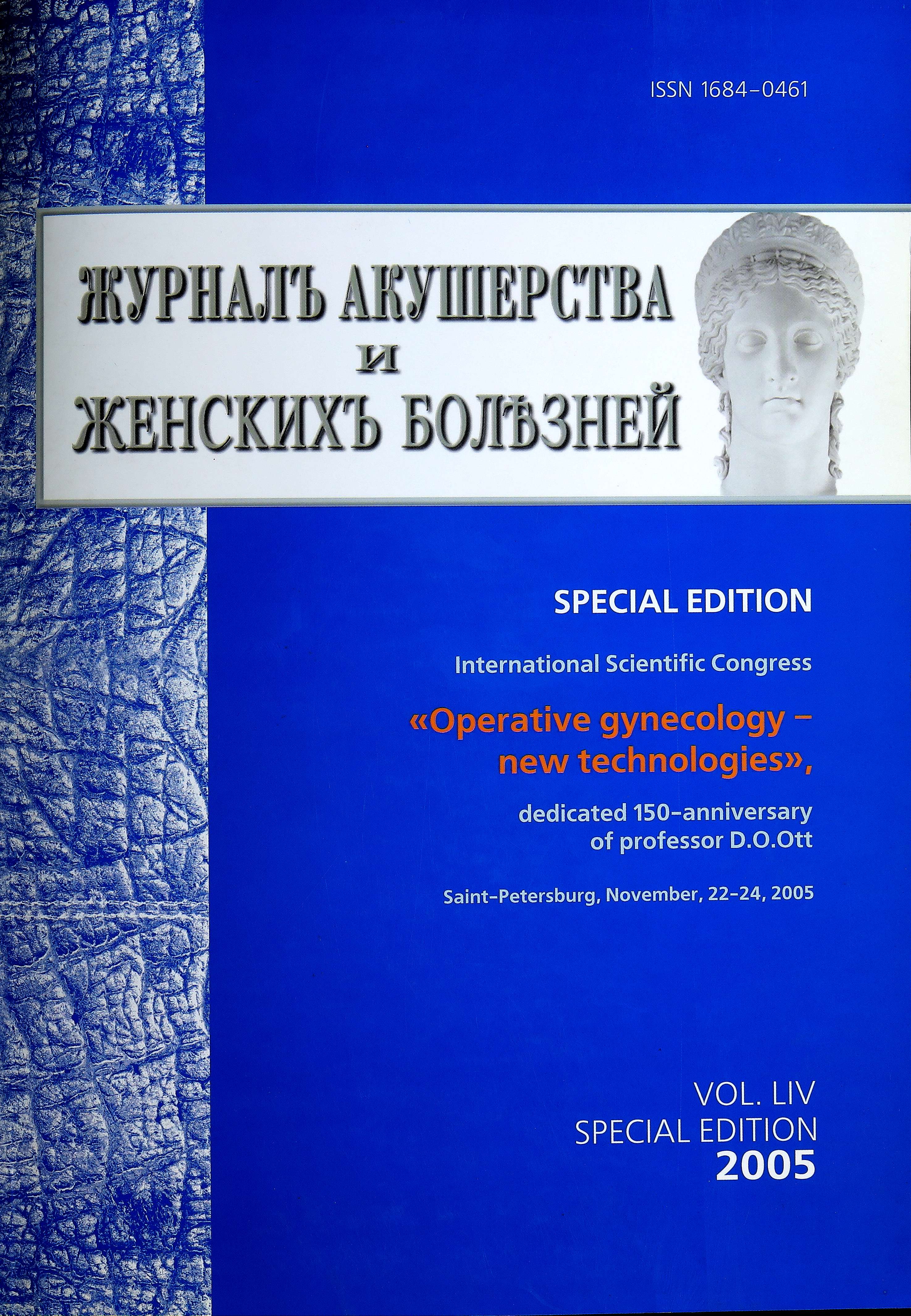Surgical repair of vaginal vault prolapse: comparing of vaginal and abdominal procedures
- Authors: Korshunov М.Y.1, Sazykina Е.I.1
-
Affiliations:
- Pavlov’s Medical State University
- Issue: Vol 54, No 5S (2005)
- Pages: 66-67
- Section: Reviews
- Submitted: 15.11.2005
- Published: 15.11.2005
- URL: https://journals.eco-vector.com/jowd/article/view/87477
- DOI: https://doi.org/10.17816/JOWD87477
- ID: 87477
Cite item
Abstract
Objective. To compare the results of abdominal sacrocolpopexy and vaginal high uterosacral vaginal vault suspension with fascial reconstruction for the uterovaginal and vault prolapse repair.
Full Text
Objective. To compare the results of abdominal sacrocolpopexy and vaginal high uterosacral vaginal vault suspension with fascial reconstruction for the uterovaginal and vault prolapse repair.
Material and methods. 62 consecutive women with III and IV stages of vaginal vault prolapse underwent one of the aforementioned surgical procedures during the period from 2001 to 2004. In group 1 (n=20) patients had posthysterectomy vault prolapse. In group 2 (n=42) advanced uterovaginal prolapse was observed. In the first group we performed abdominal sacrocolpopexy using Prolene mesh (GyneMesh PS), in the second group - vaginal hysterectomy followed by high uterosacral vaginal vault suspension with fascial reconstruction (J. Miklos, 1998). Also, we performed concomitant repairs of cystocele with reinforcement by the Prolene mesh, posterior colporraphy, levatoroplastics, TVT or TVT Obturator where needed. The vaginal profile was evaluated according to a standard POP-Q system (ICS, 1996) before and 1 year after surgery. Complete objective cure was estimated as POP-Q point C stage 0, satisfactory cure result - stage I, and objective failure > stage II.
Results. The complete objective cure or satisfactory results were observed in 100% patients from group 1 and in 41 (97,6%) patients from group 2 (P=l ,0). Indeed, complete objective cure was achieved in 19 from 20 patients in group 1 and in 31 from 42 in group 2. Objective failure (stage С II) was observed in only 1 patient in group 2. Among that, 2 recurrent cystoceles (stage Ba II) were noted in sacrocolpopexy group.
Conclusions. Vaginal repair of apical support defects by site-specific fascial reconstruction and high uterosacral ligament suspension has comparable results with abdominal sacrocolpopexy and could be used successfully in patients with advanced stages of uterovaginal prolapse, especially in those who require concomitant enterocele, cystocele and rectocele repair. Abdominal sacrocolpopexy is a highly effective method for posthysterectomy vault prolapse correction, including recurrent cases. Randomised controlled trials are needed to obtain more evidence for choosing the surgical route and procedures in patients with advanced uterovaginal, vault prolapse and enterocele.
About the authors
М. Y. Korshunov
Pavlov’s Medical State University
Author for correspondence.
Email: info@eco-vector.com
Department of Obstetrics and Gynecology
Russian Federation, Saint-PetersburgЕ. I. Sazykina
Pavlov’s Medical State University
Email: info@eco-vector.com
Department of Obstetrics and Gynecology
Russian Federation, Saint-PetersburgReferences
Supplementary files







